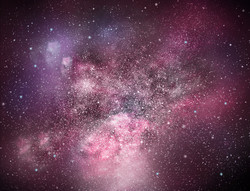Developing our understanding of the chemical evolution of the universe
For many generations, astronomers have tried to unravel the complexity of our cosmos. However, dust grains block their view of our own galaxy and of other parts of the Universe. Today, the cold, dusty regions of our and other galaxies are seen as the progenitors of evolution; they are known to be sites of star and planet formation. Infrared observations tell us that dust grains in interstellar clouds are covered in ice. These ice coatings act as a coolant during star formation, giving rise to small, long-lived stars, like our Sun. In addition, icy dust grains influence the interstellar chemistry. It is this chemical (often catalytic) behaviour of interstellar dust that the EU-funded Initial Training Network (ITN) LASSIE(opens in new window) (Laboratory astrochemical surface science in Europe) investigated. Established in 2010, the ITN represents the first coordinated effort at European level to understand this aspect of astrochemistry. The relatively young science of astrochemistry lies at the interface of astronomy, astrophysics, physics and chemistry. It is distinct from chemistry that takes place in conditions commonly encountered on Earth or in a laboratory and industrial environments. Astrochemical research therefore requires a multidisciplinary approach. This, in turn, necessitates the training of researchers able to assimilate techniques and practices from a wide range of scientific disciplines, including astronomy, physics, chemistry, and surface and low-temperature science. LASSIE brought together leading European research teams in observational, experimental and computational astrochemistry together with industrial partners specialising in laboratory instrumentation to develop a novel research programme. Research included the investigation of the formation of icy dust grains, the exploration of physical processes taking place in and on ices, and study of chemical transformations of ices under irradiation and thermal processing. Such a programme provided the basis of a comprehensive training programme for 34 early-stage and experienced researchers who acquired a range of research and complementary skills (publication engagement, scientific communication, project management etc.). Among the many and exciting advances made by Lassie ESRs were; mapping of water ice abundances in star-forming regions; pioneering laboratory studies of the aggregation of icy dust grains, the first step towards planet formation; the first laboratory observation of spontaneous molecular dipole alignment in cryogenic solids; and detailed studies of the formation and desorption of components of icy grain mantles. However, perhaps the most significant outcome of the LASSIE ITN has been the creation of a group of young researchers with the skills and enthusiasm to ensure that Europe will be at the forefront of the young science of astrochemistry for many years to come.



